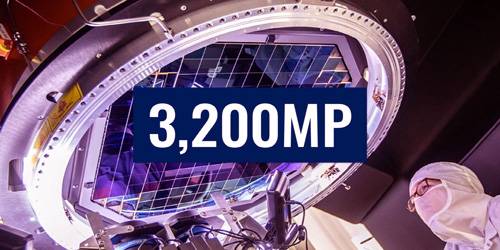The next-generation imaging material, created to investigate the universe’s greatest mysteries, has been driven by practice, and the largest images taken as a result have been created together. MENLO PARK, California – The crew at the Department of Energy’s SLAC National Accelerator Laboratory took the first 3,200-megapixel digital image – taken in the largest single shot of all time – with an amazing array of imaging sensors that will become the heart and soul of Vera The future camera of the C. Rubin Observatory. The higher resolution photos have been sewn together before, making them the largest single-frame digital photographs ever captured.
![]()
3,200-megapixel photos.
Romanesco image and another published, self-proclaimed pioneer astronomer Vera Rubin’s photo shows that the technology of this spectacular device is really cutting corners. The images are so large that one of them would require 378 4K ultra-high-definition TV screens to display in full size, and their resolution is so high that you could see a golf ball about 15 miles away. These and other features will soon lead to unprecedented astrophysical research.
For now, however, it’s still being built and tested at SLAC, and this is where the world’s first 3,200MP photograph (of which 3.2 gigapixels) was captured over the weekend. More than 2 feet wide, the focal plane is larger than the 1.4-inch-wide imaging sensor of the full-frame consumer camera and large enough to capture a portion of the sky about the size of 40 full moons. And thanks to optics and engineering to play with, it will be able to identify objects that are 100 million times fainter than can be seen with the naked eye. For more than 10 years, the camera will collect images of about 20 billion galaxies. “This information will improve our knowledge of how galaxies have evolved over time and allow us to examine our dark matter and dark energy models more deeply and precisely than ever before,” Ritz said. To put this in perspective, SLAC describes this ability equivalent to marking a candle thousands of miles away.
To capture the image, the researchers first placed the array inside a crystal to cool it to a temperature of minus 150 degrees Fahrenheit. It was then used to create a masterpiece of broccoli, for its intricate figures and with the image of the team and Vera C. This scientist was named after Rubin. Romanesco then placed the interior light inside a box and a 150, micron pinhole above it, which projected the image directly above the sun optics of the focus plane. After several months without lab access due to the coronavirus epidemic, the camera team began work in May, following the requirements of limited capacity and strict social distance. Extensive testing is now underway to ensure that the focal plane meets the technical requirements required to support the Rubin Observatory Science program.
Aaron Rudman of SLK, the scientist in charge of assembling and testing LSST cameras, said: “Taking these images is a great achievement. “With stricter specifications, we’ve taken advantage of every square millimeter of the focal plane and pushed the science that we can do the most to the limit.” From here, the team will begin work on integrating the focal plane with the camera body, its lens, a shutter, and a filter system to observe the night sky in different colors. The finished product will be the size of an SUV with plans to begin final testing by about mid-2020. While some high-level stages of the project are behind them, the team still has challenging work to do to create the rest of the camera. The final test is expected to begin in mid-2021. In the next part: Before adding the world’s largest optical lens, the sensor is mounted on the camera body in its sub-zero crystal. So stay tuned, because we expect to see a lot more from LSST in the near future.
















